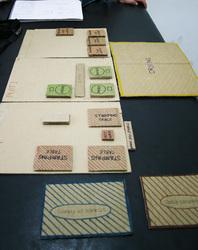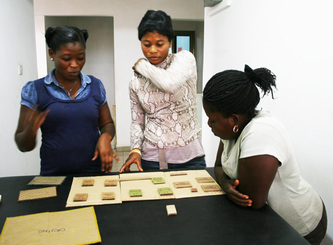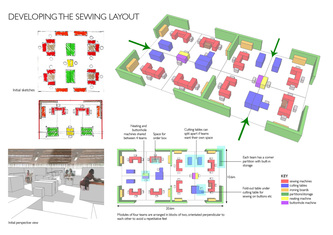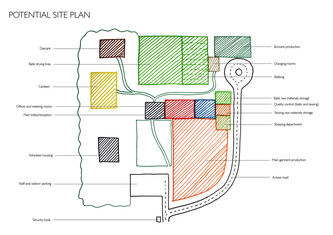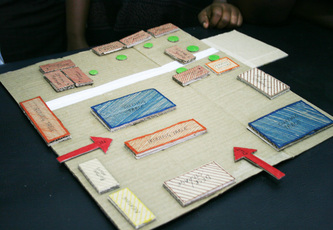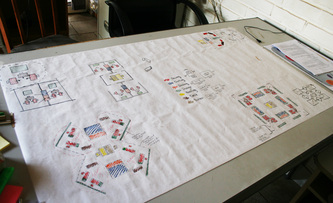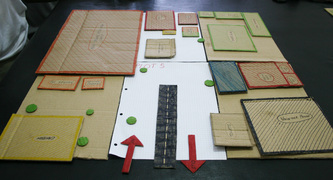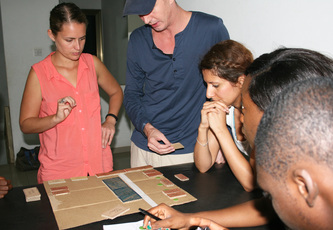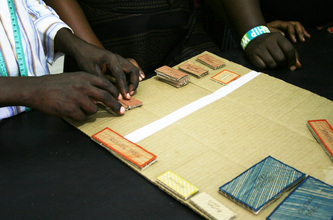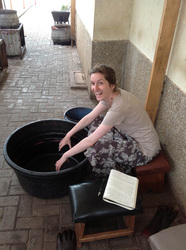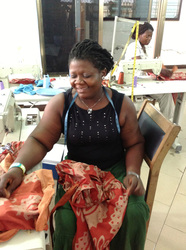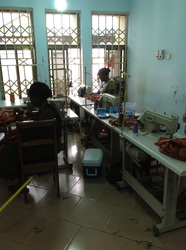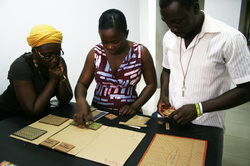
At the beginning of the week we made another participation model – this time of all the spaces needed for batiking. We went to Ashaiman (again!) to speak to the batikers and do a modelling exercise with them. It was very useful and some important criteria came out of it. For example, the batikers were very clear that they would like two different drying areas – one for after the fabric has been dyed, and a separate one for after the fabric has been dewaxed at the end, so that the finished fabric doesn’t get marked by flecks of old dye.
We then did the same exercise with the managers - Tasha, Amos and Dorcas. It’s always interesting to see how the responses differ, and one of the challenges of this project is to incorporate and reconcile the differing priorities of the management and the mamas.
We spent the rest of the week developing the master plan for the site which has been proving more difficult than we imagined! Especially as Global Mamas don’t yet have a physical site for the FTZ, so we are trying to develop a plan that can be adapted to the land they eventually acquire. I think there will be lots more sketching and experimenting before we come up with an optimal layout!
Emily
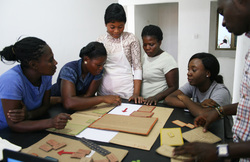
We’ve been up to a lot since we returned from Cape Coast. We spent the rest of last week recording graphically all the information we had collected during the trip. Have a look at the Gallery section to see some of our work, not just from the last week but from the project so far.
We also finally got down to some designing! We decided to start at the small scale with the layout for the sewing teams, and scale up from there. There was a fun afternoon spent sketching out different ideas and working out how much space will be needed for a team of three people working together to make the garments. Then we moved on to making some models that the Mamas could use to show us their ideas for the layouts. Using simple cardboard shapes, we modeled the components needed for the sewing workstations, and also all the spaces needed on the site as a whole.
On Tuesday this week we took the models to Ashaiman, and continued our participatory design by asking focus groups of four women to arrange the components as they would like the real site laid out. We did the activity with four groups in total. The Mamas got really into it and were soon enthusiastically discussing different layouts. It was great to find out what they thought, and they came up with plenty of ideas we hadn’t considered!
The rest of this week has been spent analysing and testing the different layouts. I’ve been focusing on the sewing workspace and Kofi has been looking at the site plan. We’ve done some 3D modelling of different options, and now we can start designing the buildings in more detail.
Emily
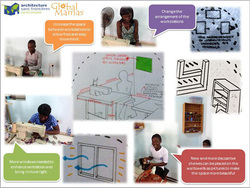
Our second trip to Ashaiman was quite a fruitful endeavor. The first visit was to find out more about the batik making process so we could understand the process which would reflect in our design. This time, we had a chance to interact with some of the Mamas and ask them a few questions about what they would want to see in their new production facility.
Questions like “How can we make the space more comfortable?” “How can we make it more personal?” “What other spaces would you want to include in the new facility?”- were just a few of the questions we asked the Mamas. They were cooperative and gave us enough suggestions which we decided to include in our design. Some of the Mamas suggested separate rooms for storage, more natural lighting, better ventilation and an outdoor eating area.
With the batik makers their major concern was the size of their workspace, which was quite small and led to problems like the scent of the dye staying in the workspace and even going as far as disturbing the seamstresses due to poor ventilation. The seamstresses wanted more storage units for their items and different colours for their walls, some even suggested, LIME GREEN! In addition to this they asked for pictures and clothes on the wall as inspiration for them. We then came together as a team and translated these suggestions into sketches and process drawings.
Adjoa

